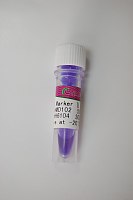Protocols for Ancient DNA Typing
互联网
461
Molecular analysis of fossil and archaeological remains has been established as a powerful tool in providing new insight in phylogenetic investigations. The overlapping set of molecular modifications and degradation that forensic samples share with archaeological specimen suggests the application of similar technical approaches to the respective biological material. Polymerase chain reaction is the molecular technique of choice for the retrieval of specimen deoxyribonucleic acid (DNA) molecules. Because of intrinsic sensitivity, potential contaminations from exogenous DNA sources must be monitored through the entire process by the introduction of multiple blank controls. Cloning and sequencing of polymerase chain reaction products often is the only way to discriminate between contaminations and endogenous sequences as well as to identify variable positions from nucleotide modifications/DNA polymerase errors. Phylogenetic analysis and investigations of the pattern of substitutions are an additional and necessary step to validate the retrieved sequence. Comparison with available related samples (modern or extinct) is critical to correctly validate the results and to avoid artifactual data.





![PSMB9 LMP2=proteasome LMP2.s {alternatively spliced} [human, EBV-transformed B lymphoblastoid typing cell lines, mRNA, 645 nt].](https://img1.dxycdn.com/p/s14/2024/0514/752/2760093895118520971.jpg!wh200)



